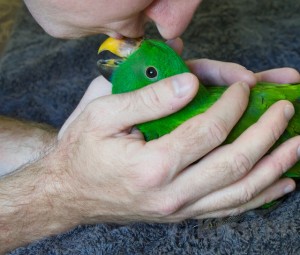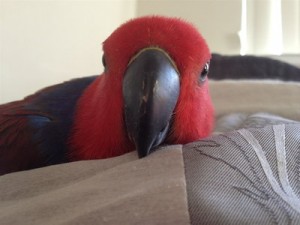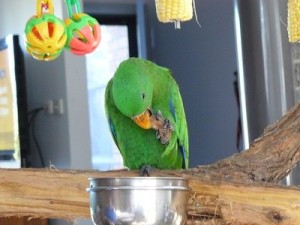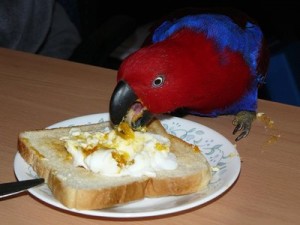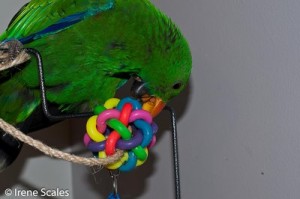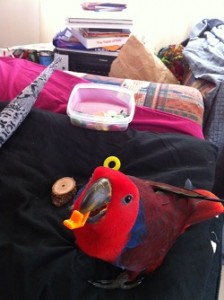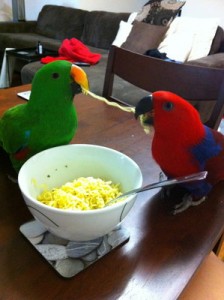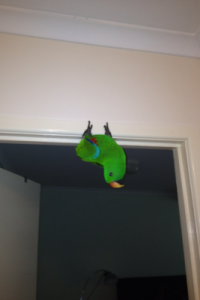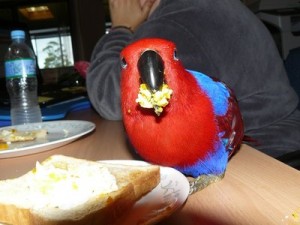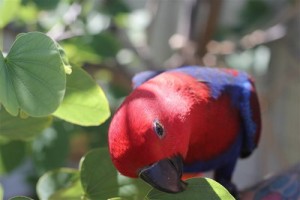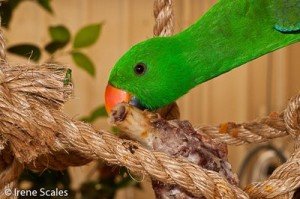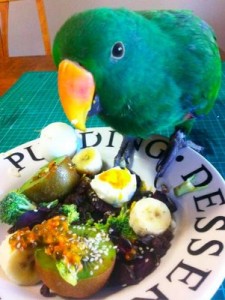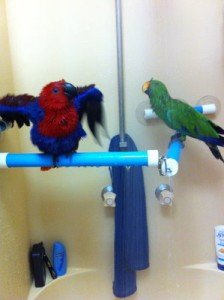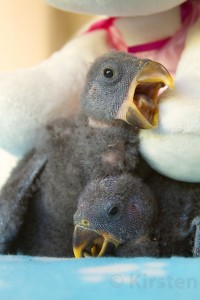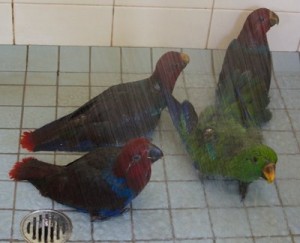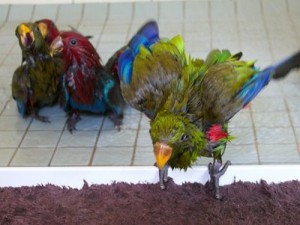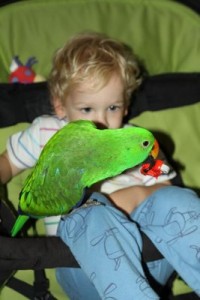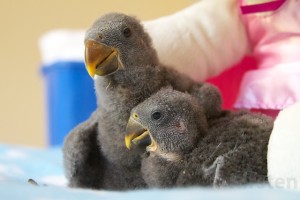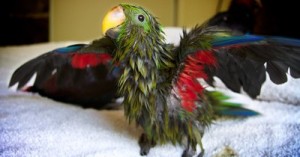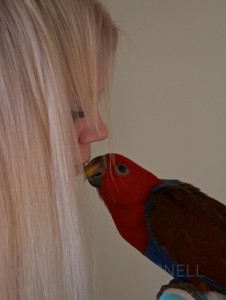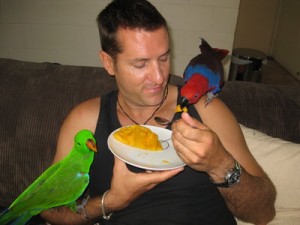Looking outside this morning I was struck by the beauty of the season change as it seemed only yesterday we were celebrating our warm Aussie Christmas. In the southern areas of Australia, Autumn is in full swing. The leaves blanket the ground in a sea of red, gold and yellow and the garden is a vast array of color. Our trees signal a time for change not only in weather but also in our parrots diet as we ready them for the cold months ahead.
Australia’s climate is varying and in the northern states winter comes and goes relatively un-noticed. My Eclectus parrots and I lived in the tropics for many years before re-locating to a much colder climate. I watched year after year as our Eckies appetite remained relatively stable with the constant year round heat. They had no need to bulk up for the upcoming winter as in Far North Queensland winter is a long forgotten season. Summers are swelteringly hot and you feel like you are living in a perpetual sauna, the ‘winter’ months are less humid however daily attire remains the same, shirts, shorts and always a good amount of sunscreen.
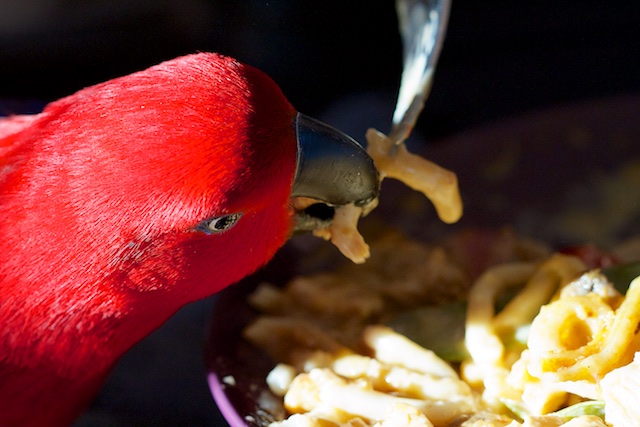 My husband, Eckies and I now enjoy a winter where night time temperatures can reach zero degrees celsius for weeks on end and this could take its toll on our parrots. On cold nights we bring our feathered kids inside where they enjoy the radiating heat from our fireplace. The Eckies love this routine and watch eagerly each night as we bring out their winter night time cages and ferry each Eckie inside one by one where they snuggle up next to their mate while watching a movie before bed. However in the morning they are keen to go outside to their aviary where they greet the morning, enjoy a fly and for one crazy boy, Cletus, revel in an ice cold dip in the water bowl. It is hysterical to watch him splash around, water fly’s everywhere as he exhales little puffs of smoke from his nostrils. The grass sparkles with frost, wind blows off the snow but this little man is un-perterbed. Cletus is a lifelong member of the Polar Bear club and revels in his morning ritual.
My husband, Eckies and I now enjoy a winter where night time temperatures can reach zero degrees celsius for weeks on end and this could take its toll on our parrots. On cold nights we bring our feathered kids inside where they enjoy the radiating heat from our fireplace. The Eckies love this routine and watch eagerly each night as we bring out their winter night time cages and ferry each Eckie inside one by one where they snuggle up next to their mate while watching a movie before bed. However in the morning they are keen to go outside to their aviary where they greet the morning, enjoy a fly and for one crazy boy, Cletus, revel in an ice cold dip in the water bowl. It is hysterical to watch him splash around, water fly’s everywhere as he exhales little puffs of smoke from his nostrils. The grass sparkles with frost, wind blows off the snow but this little man is un-perterbed. Cletus is a lifelong member of the Polar Bear club and revels in his morning ritual.
As good parrot slaves we must begin changing our Eckies diet in the Autumn months to be sure our kids are in peak condition. Parrot owners often notice their kids appetite changing as the weather starts to cool. Our own Eckies turn into ravenous eating machines and we find ourselves filling and re-filling their food bowls up to three to four times a day. I have spent many years living in a cold climate and watched as our Eckies food preferences altered dramatically in direct correlation to the season change. They seek out high energy foods and I modify their diet in accordance to this.
Parrots need a fat reserve to help them maintain their body temperature as when our kids get cold they expend a great deal of energy trying to warm up. If a parrot is underweight then they are not going to be able to remain warm and this makes them susceptible to illness and further weight loss. It is natural for our kids to want to put on a little extra padding during this time and as good parrot owners we must let our Eckies appetite guide us.
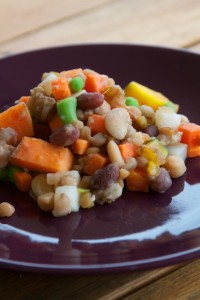 Parrot Haven kids love a warm winter meal and they like to let be a part of their daily cook up. Blue, Cletus and many of our other Eckies fly to the kitchen window and tap on the glass as I bring out the pots and pans. They scrutinize every move I make as to ensure I am making the food to their liking. I like to cook a fresh meal for our kids each day if possible especially during the middle of winter.
Parrot Haven kids love a warm winter meal and they like to let be a part of their daily cook up. Blue, Cletus and many of our other Eckies fly to the kitchen window and tap on the glass as I bring out the pots and pans. They scrutinize every move I make as to ensure I am making the food to their liking. I like to cook a fresh meal for our kids each day if possible especially during the middle of winter.
The advice in this article is based on our current location and may differ from my old routine which is outlined in our book. In early Autumn I cook a warm meal every third day and then as the weather cools further I increase this to every second day. I watch closely and take note of how much of the meal is eaten and if there are particular foods that are favored over others. I feed the kids their cooked meal both morning and night on these days, serving it in a separate bowl so not to mix it with their day time fruit/veg and sprouted seed.
In the depths of winter I feed a hot meal every day both morning and night. They also receive a mix of warm egg and biscuit just before sundown. The kids love their egg and biscuit and jostle for the best feeding position. Being the spoilt kids they are they prefer to be spoon fed and when you have over 25 parrots, this becomes quite chaotic. However everyone always gets their fill and it is comforting to know they are going to bed with a crop full of hot, nutritious food.
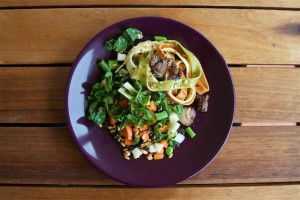
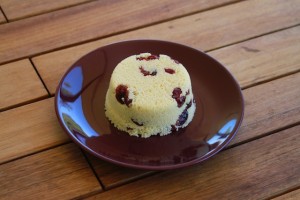
We have many recipes available in our book, The Ultimate Guide to Eclectus Parrots. These will give you some great ideas for winter meals for your kids. We feed our own kids many of the foods from the following list and have a great time creating new and exciting recipes for our feathered family.
The following foods are high in protein
- Cooked meat and chicken
- Boiled eggs (cooked right the way through)
- Almonds
- Pumpkin seeds (also known as pepitas)
- Lentils and pulses
- Chia
- Asparagus
- Broccoli
- Cauliflower
- Sweet corn
Foods such as:
- Brown rice
- Brown pasta
- Lentils/legumes (cooked only)
- Cous cous
- Quinoa
These make a great base for your winter recipes or a quick and easy warm meal if you are running short on time. Each day I serve a small portion (1/3 of a cup approx. per bird) of nice warm food. Be sure to monitor your parrots weight by keeping a weight chart. Weigh your parrot twice a week preferably before their morning meal. This way you can track any changes and ensure they remain a healthy weight during winter. Eckies are very adept at regulating their food intake and this helps to guide us so we can better understand their dietary requirements and the portion we should feed.
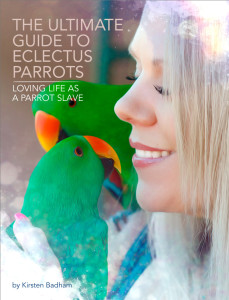 Even if your Eckie lives in the house with you, they will still enjoy a lovely warm meal in winter. So, bust out the pots, pans and start experimenting with some winter avian treats. It’s a rewarding feelings to watch your feathered kid devour a meal you have prepared or see their little eyes light up as you bring them something new and exciting. So have some fun with it. Get creative and share your wonderful recipes with other parrot lovers.
Even if your Eckie lives in the house with you, they will still enjoy a lovely warm meal in winter. So, bust out the pots, pans and start experimenting with some winter avian treats. It’s a rewarding feelings to watch your feathered kid devour a meal you have prepared or see their little eyes light up as you bring them something new and exciting. So have some fun with it. Get creative and share your wonderful recipes with other parrot lovers.
Eckie slaves can also download our book, The Ultimate Guide to Eclectus Parrots. Our book has received many wonderful reviews, has a five star rating in the iBook store and is on the best sellers list.

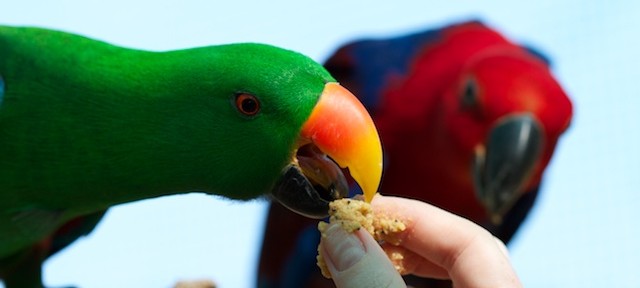

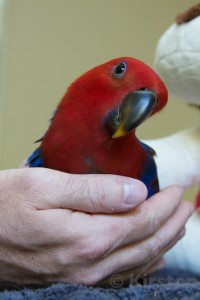 I have seen my own work on other avian websites over the years, written word for word. On one such occasion I contacted the person and requested they remove the plagiarized content. I checked back later only to find my work re-worded however the author had made so many errors while changing my copy that the advice they were giving was harmful and potentially deadly. It made me shudder to think of people following such advice, especially at the detriment to their parrot.
I have seen my own work on other avian websites over the years, written word for word. On one such occasion I contacted the person and requested they remove the plagiarized content. I checked back later only to find my work re-worded however the author had made so many errors while changing my copy that the advice they were giving was harmful and potentially deadly. It made me shudder to think of people following such advice, especially at the detriment to their parrot.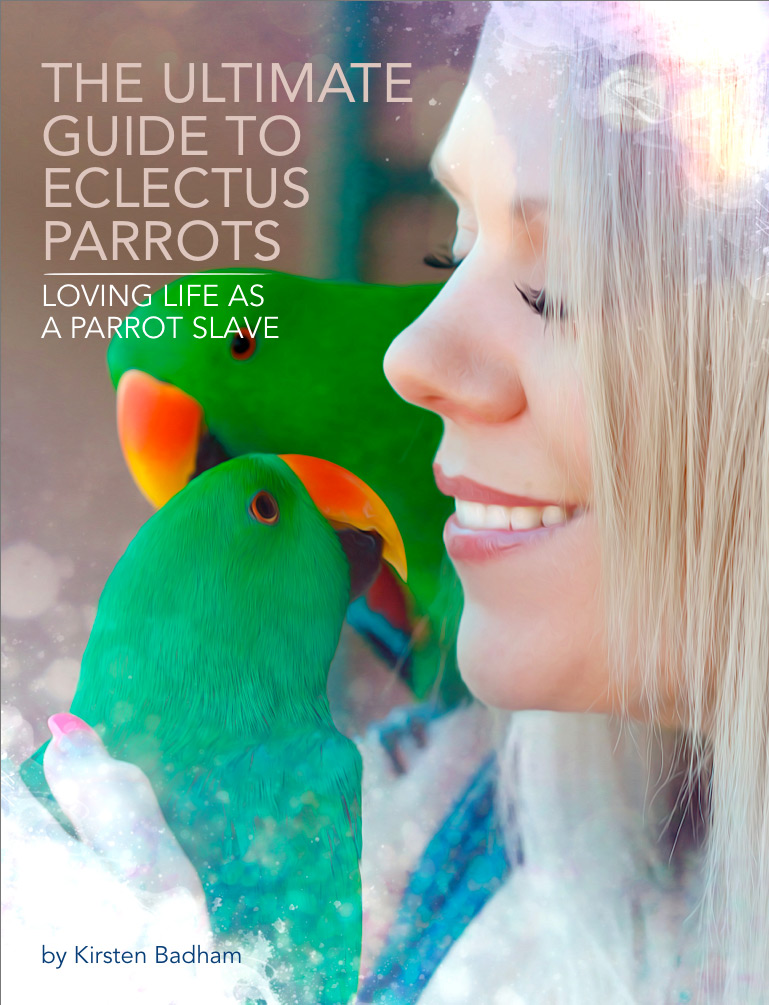


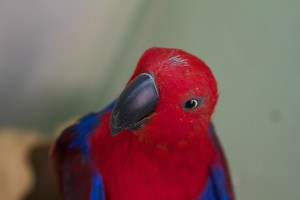
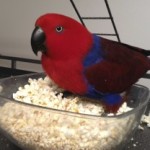 Red on the other hand showed a great deal of interest in where ‘Mum & Dad’ lived and soon began lifting her foot up and looking up at the house when we would visit with the kids. We brought her a travel carrier which she stepped into quite happily and we brought her inside with us. Ever since then she has been an amazing pet. She helps Kirsten cook meals, prepare the fruit and veg that we feed the kids every day and she quite happily perches next to us when we work inside. She showers regularly with us and her vocabulary has grown amazingly!
Red on the other hand showed a great deal of interest in where ‘Mum & Dad’ lived and soon began lifting her foot up and looking up at the house when we would visit with the kids. We brought her a travel carrier which she stepped into quite happily and we brought her inside with us. Ever since then she has been an amazing pet. She helps Kirsten cook meals, prepare the fruit and veg that we feed the kids every day and she quite happily perches next to us when we work inside. She showers regularly with us and her vocabulary has grown amazingly!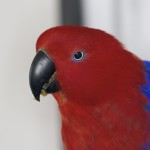 Kirsten has tried very hard over the years to balance her breeding technique with an insight into what the parrots experience. Being empathic is a good way to live not just when it comes to human relationships. While her method may be non-traditional from a breeding standpoint, the results speak for themselves. We both have the most amazing companion parrot in part due to the way Kirsten has raised and cared for her all these years.
Kirsten has tried very hard over the years to balance her breeding technique with an insight into what the parrots experience. Being empathic is a good way to live not just when it comes to human relationships. While her method may be non-traditional from a breeding standpoint, the results speak for themselves. We both have the most amazing companion parrot in part due to the way Kirsten has raised and cared for her all these years.